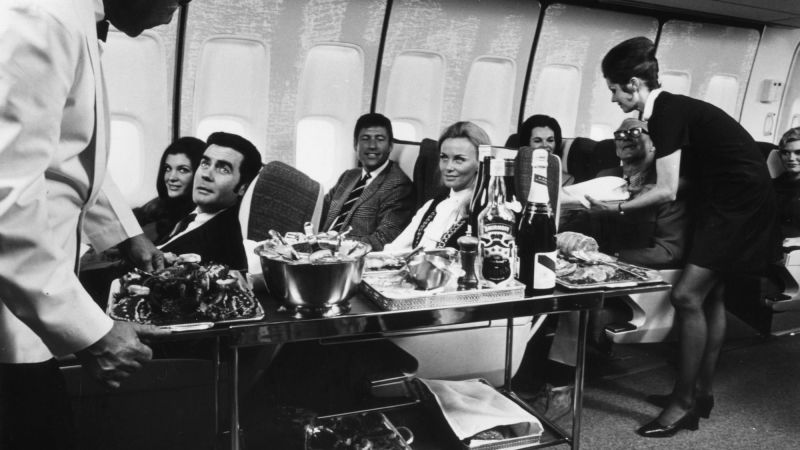In the 1960s, American Airlines passengers flying in Coach class could enjoy a luxurious dining experience with a menu that included items such as beef consommé, sautéed breast of chicken, and fruit tartlet for dessert. However, today, passengers flying in Coach class on most airlines will only receive a free meal on long-distance international flights or select coast-to-coast domestic flights. Shorter flights may offer complimentary snacks like Biscoff cookies or pretzels, highlighting a significant decline in in-flight dining experiences over the years.
The disappearance of meals on flights can be attributed to various factors, including industry cost-cutting measures, changing government regulations, aircraft design modifications, in-flight entertainment advancements, tax breaks for airlines, and increased health and safety concerns. Airlines have adapted their meal offerings to accommodate these changes, resulting in smaller, more basic, or nonexistent meal options for passengers. Safety protocols post-9/11 have also impacted the types of cooking tools allowed in-flight, as well as restrictions on certain allergen foods like peanuts.
Airline executives have shifted their focus from the quality and taste of in-flight meals to reducing costs and increasing efficiency. Many airlines outsource their food preparation to catering services, with an emphasis on cost savings and faster meal solutions. Passengers are now accustomed to paying extra for in-flight food items, such as sandwiches or snack boxes, which also allows airlines to save on taxes. The shift towards cost-effective meal offerings reflects a broader trend in the aviation industry where passengers prioritize low fares over in-flight amenities.
The history of in-flight dining dates back to the early days of commercial aviation when airlines offered food like chewing gum to passengers to relieve pressure during flights. Airlines used lavish meal service as a way to distinguish themselves and attract customers before the industry was deregulated in 1978. Airline advertisements highlighted elaborate menus and gourmet meals prepared in sky-high kitchens onboard aircraft. However, with deregulation came a decline in food choices and services, as airlines sought to reduce costs and remain competitive in a changing market.
The events of September 11 further impacted the availability of free meals on flights, with many airlines scaling back their meal services following a sharp reduction in demand post-attacks. Airlines like United, American Airlines, Delta, and others announced significant cutbacks in meal offerings in response to the crisis. Continental Airlines was the last major carrier to end free domestic meals in economy class in 2010, marking the end of an era for complimentary airline dining in Coach class. While first-class passengers continue to enjoy gourmet meal options, it is unlikely that free meals will return for Coach passengers anytime soon.
Despite the decline in free meal service for most economy-class passengers, the golden age of airline food persists for those flying in premium cabins like first class. Airlines such as American and Delta offer a variety of gourmet meal options for first-class passengers, ranging from Mediterranean bowls to smoked peppered chicken breast salads. Some airlines even provide caviar as part of their first-class meal service. Overall, the disparity in in-flight dining experiences between various cabin classes reflects the evolving landscape of the aviation industry and passenger preferences for amenities and comfort while flying.













